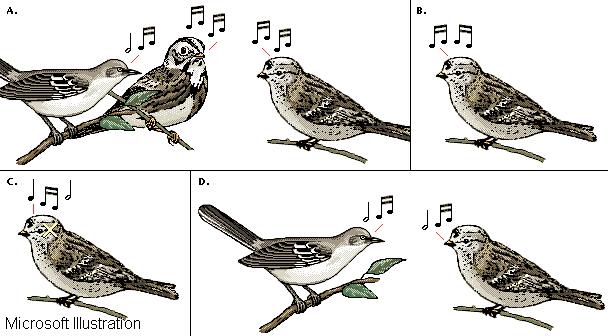

The activities of songbirds, as illustrated here for the white-crowned sparrow, are the expression of several interrelating factors. Photosensitive cells in the bird's brain respond to lengthening daylight by stimulating the release of hormones. Hormonal changes cause physiological changes (above, in green) such as the development of reproductive organs. In turn, the physiological cycle affects the behavioral cycle (in purple). The events in these parallel cycles correlate predictably. The cycles begin to repeat at right, the beginning of a new reproductive year.
The white crowned sparrow chick's ability to learn song depends on both biological and social cues. A. If exposed to the songs of many species while growing up, the chick invariably picks out and learns the correct song. B. If isolated during the song-learning phase, the chick produces only a rough outline of the normal song. C. If deafened at an early age, the chick's song is entirely abnormal. D. A chick that is socially (but not acoustically) isolated from its own species but in contact with the adult of another species learns its tutor's song.
